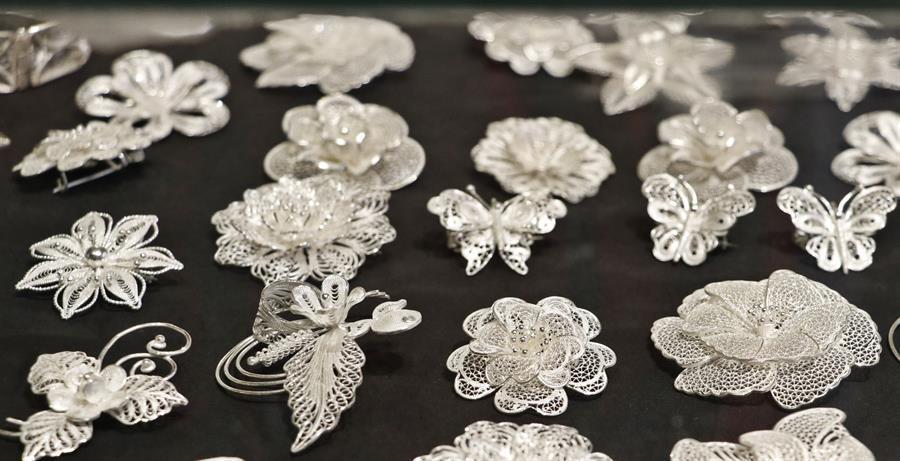
Suphi Hindiyerli, a 75-year-old filigree master from the eastern province of Mardin, who is the holder of the Living Human Treasure award presented by Turkish President Recep Tayyip Erdoğan on Feb. 14, 2019, wants to open a workshop to teach and keep the 5,000-year-old traditional Turkish art of filigree alive.
“I want to open a workshop in the public education center and train new masters to keep this profession alive before I die,” the Assyrian filigree master said, adding that he was considering to quit his lifelong profession due to health problems.
Stating that he has produced thousands of artworks so far and has represented Turkey in many international fairs, Hindiyerli said, “I received many awards, and all of them are very valuable, but the Living Human Treasures award has a different place for me.”
Stating that he had worked as a jeweler in Istanbul for 20 years, Hindiyerli said, “I am a Turkish traditional handicraft artist of the Culture and Tourism Ministry. I went to the U.S. three times and once to Saudi Arabia.”
Talking about his journey of mastering the filigree technique, he said: “I learned the art of filigree from my brother. We were doing it on the kerosene lamp. There was no electricity. After military service, I opened a workshop. I have trained many apprentices and masters.”
He also noted that so far, he has trained some 120 children, but only four of them became a professional in the art.
“The art of filigree is a very difficult and demanding job. Turkey has spent too much money to keep this tradition alive. You need to teach, produce, and look for markets outside. In this way, the workers can earn some money, too,” he said.
“Why don’t we have 50-100 people dealing with this art? We need to look for a market in Europe,” he said, adding that Europeans would admire this art.
He also said that he went to Istanbul in 1978 and came back to Mardin in 1997. “If I die, I want to die in my hometown.”
Hindiyerli said that the world did not know where America was at the time when the art of filigree was performed in Mesopotamia.
“I have a book on it. This art was made in Mesopotamia 3,000 years ago. This is 5,000 years of handicraft. The silver fineness used at that time is still in use today. I made filigree from gold and silver for 65 years, but now I am old. My eyes are weaker now,” he said, adding that he wants to transfer his 65 years of knowledge to the younger generations.